They may fall into the same overall category, but cooked and fresh meat are worlds apart. While the cooked meat market is bursting with brands, big names are few and far between in fresh.
And although this is the case in both c-stores and multiples, Deborah Carter, senior consultant at brand agency Dragon, believes that larger retailers have the upper hand. "The multiples' fresh meat footfall is bound to be stronger than independent c-stores' because they are able to stock the same own-label products throughout both their large outlets and convenience stores."
In order to keep up with competition from the major retailers, Carter believes there is call for a two-stream approach. "There's already a large offer from the multiples of ready-to-cook meat that has been pre-seasoned," she notes. The supermarkets offer an array of such premium products; Sainsbury's Inspired To Cook range includes Sun Dried Tomato & Olive Chicken, while Asda offers a Ready to Roast boneless lamb shoulder with a cranberry and mint stuffing. "One approach for c-stores is to see if this kind of product can be made available for their market," says Carter.
"The second approach needs to comprise more economical offers, such as ready marinated pieces of chicken cut into chunks, or sausages in a sauce - some type of family meal."
Meanwhile, stores that prefer to stick to plain cuts of fresh meat can increase sales by providing people with a simple serving suggestion via recipe leaflets, she suggests. "You could ask manufacturers of complementary products - for example, spices - to provide serving suggestions for fresh meat." C-stores can also link fresh meat with other categories via promotions, she advises. "For example, you could encourage sales by offering a free packet of peas when you buy a whole chicken."
Carter claims that introducing own-label branding into c-stores could also help to grow sales by increasing consumer trust. "The convenience offer is great, but you need the reassurance aspect," she says.
"C-stores need to think about endorsing the quality of their own-label fresh meat through stocking British or local produce."
She praises Booker for taking note of consumers' desire for authenticity: "Booker has picked up on consumer trends, such as provenance, and introduced a Butcher's Market range."
However, she warns that it is vital for brands to tell a story in order to capture consumer interest. "For Nisa to just stamp the word 'heritage' on a pack doesn't seem very credible. Whose heritage is it referring to?" she questions.
One of the few fresh meats to have been successfully branded is sausages, but even a family favourite such as Wall's has to ensure that it is sending out the right messages. Wall's senior brand manager at Kerry Foods Mark Brown says: "We have relaunched the Wall's brand, which has included reformulating and repackaging the products and launching an ad campaign in order to keep up with changing consumer tastes. If you look at the sausage market, to a degree it has become very premiumised, whereas Wall's has been the same since the 1970s, which is why we knew we needed to change. There's always a risk with change, but we've spent £250,000 on research to find out what consumers want, so we're feeling confident."
The research showed that although shoppers were satisfied with Wall's sausages, they didn't view them as premium, claims Brown. To ensure that consumers appreciate the quality of Wall's products, the company's new ad campaign focuses on how the sausages are made from 'the two best bits' of meat - the pork shoulder and belly. "We have only ever used pork shoulder, which adds tenderness, and pork belly for succulence, but now we use them in greater quantities," says Brown. "These days shoppers are more willing to experiment when it comes to different textures, so we wanted to give them a better quality product."
He claims that brands are very important to the meat category. "With the likes of Tesco and Sainsbury's, consumers tend to trust the store's own-label brands, but convenience stores don't have this, so it is important for them to stock the leading brands," he says. "Trust is a big issue with meat because of issues with food safety, so people tend to stick to the names they're familiar with."
Another household staple which has recently undergone a revamp to keep up with the times is Bernard Matthews Farms. Having gone through a low period due to furore around bird flu, the firm is focusing consumer attention on its rural roots. "By introducing Golden Norfolk turkey into cooked meats, focusing on our farming heritage and launching branded free-range cooked meats, I believe we can do a great deal to restore quality perceptions, consumer trust and drive new interest in this £1.2bn category," says Bernard Matthews Farms marketing director Matt Pullen.
In order to help consumers decide which products to buy, the company has introduced a 'good', 'better' and 'best' tiering system. Eight new British Golden Norfolk turkey breast products including slices, carvery cuts and thick cut fillets comprise the 'better' offering, with products such as Wafer Thin Turkey Ham and Wafer Thin Turkey in the 'good' tier. Three free-range Golden Norfolk Turkey sliced breast meat products will make up the 'best' offering.
Kerry Foods' cooked meat brand Mattessons is also planning to expand its tiered range. "In December 2006 we launched a Mattessons breaded gammon into our 'best' range and it's done really well, so following on from this, we're repositioning some of our sliced cooked products to create a three-tier range," says Kerry Foods marketing executive Lisa Badger.
"We've just launched an everyday mid-range containing cooked ham, honey ham and roast chicken. And in our value range we'll offer corned beef, cooked ham, cooked chicken and pork luncheon meat. In the multiples you see 'good', 'better', 'best' tiers and we're trying to emulate that in the convenience sector."
The idea of tiering products may well work to Mattessons' advantage as consumers adapt their spending habits to cope with the current economic crisis. "Recently, there has been slight growth in economy ranges, partly due to the credit crunch," says Badger. "It'll be interesting to watch how some people downgrade particular products, but I don't think people will stop buying meat altogether. After all, the cooked and sliced meats sector has 90% penetration in UK households."
Wall's Brown is also prepared for a similar shift in consumption trends. "We've not seen any negative effect on sales so far, but in the future we may see people trading down from premium brands to more everyday offerings," he says. "Sausages are good value for money and people see them as a comfort product. Also, people view them as a classic British food, so they won't be the first products to be hit by the credit crunch."
Carter agrees that the meat category has a bright future. "Although the credit crunch will see people buying cheaper meats, they are still likely to have their three portions of meat a week."
And although this is the case in both c-stores and multiples, Deborah Carter, senior consultant at brand agency Dragon, believes that larger retailers have the upper hand. "The multiples' fresh meat footfall is bound to be stronger than independent c-stores' because they are able to stock the same own-label products throughout both their large outlets and convenience stores."
In order to keep up with competition from the major retailers, Carter believes there is call for a two-stream approach. "There's already a large offer from the multiples of ready-to-cook meat that has been pre-seasoned," she notes. The supermarkets offer an array of such premium products; Sainsbury's Inspired To Cook range includes Sun Dried Tomato & Olive Chicken, while Asda offers a Ready to Roast boneless lamb shoulder with a cranberry and mint stuffing. "One approach for c-stores is to see if this kind of product can be made available for their market," says Carter.
"The second approach needs to comprise more economical offers, such as ready marinated pieces of chicken cut into chunks, or sausages in a sauce - some type of family meal."
Meanwhile, stores that prefer to stick to plain cuts of fresh meat can increase sales by providing people with a simple serving suggestion via recipe leaflets, she suggests. "You could ask manufacturers of complementary products - for example, spices - to provide serving suggestions for fresh meat." C-stores can also link fresh meat with other categories via promotions, she advises. "For example, you could encourage sales by offering a free packet of peas when you buy a whole chicken."
Carter claims that introducing own-label branding into c-stores could also help to grow sales by increasing consumer trust. "The convenience offer is great, but you need the reassurance aspect," she says.
"C-stores need to think about endorsing the quality of their own-label fresh meat through stocking British or local produce."
She praises Booker for taking note of consumers' desire for authenticity: "Booker has picked up on consumer trends, such as provenance, and introduced a Butcher's Market range."
However, she warns that it is vital for brands to tell a story in order to capture consumer interest. "For Nisa to just stamp the word 'heritage' on a pack doesn't seem very credible. Whose heritage is it referring to?" she questions.
One of the few fresh meats to have been successfully branded is sausages, but even a family favourite such as Wall's has to ensure that it is sending out the right messages. Wall's senior brand manager at Kerry Foods Mark Brown says: "We have relaunched the Wall's brand, which has included reformulating and repackaging the products and launching an ad campaign in order to keep up with changing consumer tastes. If you look at the sausage market, to a degree it has become very premiumised, whereas Wall's has been the same since the 1970s, which is why we knew we needed to change. There's always a risk with change, but we've spent £250,000 on research to find out what consumers want, so we're feeling confident."
The research showed that although shoppers were satisfied with Wall's sausages, they didn't view them as premium, claims Brown. To ensure that consumers appreciate the quality of Wall's products, the company's new ad campaign focuses on how the sausages are made from 'the two best bits' of meat - the pork shoulder and belly. "We have only ever used pork shoulder, which adds tenderness, and pork belly for succulence, but now we use them in greater quantities," says Brown. "These days shoppers are more willing to experiment when it comes to different textures, so we wanted to give them a better quality product."
He claims that brands are very important to the meat category. "With the likes of Tesco and Sainsbury's, consumers tend to trust the store's own-label brands, but convenience stores don't have this, so it is important for them to stock the leading brands," he says. "Trust is a big issue with meat because of issues with food safety, so people tend to stick to the names they're familiar with."
Another household staple which has recently undergone a revamp to keep up with the times is Bernard Matthews Farms. Having gone through a low period due to furore around bird flu, the firm is focusing consumer attention on its rural roots. "By introducing Golden Norfolk turkey into cooked meats, focusing on our farming heritage and launching branded free-range cooked meats, I believe we can do a great deal to restore quality perceptions, consumer trust and drive new interest in this £1.2bn category," says Bernard Matthews Farms marketing director Matt Pullen.
In order to help consumers decide which products to buy, the company has introduced a 'good', 'better' and 'best' tiering system. Eight new British Golden Norfolk turkey breast products including slices, carvery cuts and thick cut fillets comprise the 'better' offering, with products such as Wafer Thin Turkey Ham and Wafer Thin Turkey in the 'good' tier. Three free-range Golden Norfolk Turkey sliced breast meat products will make up the 'best' offering.
Kerry Foods' cooked meat brand Mattessons is also planning to expand its tiered range. "In December 2006 we launched a Mattessons breaded gammon into our 'best' range and it's done really well, so following on from this, we're repositioning some of our sliced cooked products to create a three-tier range," says Kerry Foods marketing executive Lisa Badger.
"We've just launched an everyday mid-range containing cooked ham, honey ham and roast chicken. And in our value range we'll offer corned beef, cooked ham, cooked chicken and pork luncheon meat. In the multiples you see 'good', 'better', 'best' tiers and we're trying to emulate that in the convenience sector."
The idea of tiering products may well work to Mattessons' advantage as consumers adapt their spending habits to cope with the current economic crisis. "Recently, there has been slight growth in economy ranges, partly due to the credit crunch," says Badger. "It'll be interesting to watch how some people downgrade particular products, but I don't think people will stop buying meat altogether. After all, the cooked and sliced meats sector has 90% penetration in UK households."
Wall's Brown is also prepared for a similar shift in consumption trends. "We've not seen any negative effect on sales so far, but in the future we may see people trading down from premium brands to more everyday offerings," he says. "Sausages are good value for money and people see them as a comfort product. Also, people view them as a classic British food, so they won't be the first products to be hit by the credit crunch."
Carter agrees that the meat category has a bright future. "Although the credit crunch will see people buying cheaper meats, they are still likely to have their three portions of meat a week."
Have a butcher's
Derek Ritchie, owner of a Costcutter store in Ellon, Aberdeenshire, has taken his meat offering a step further than most, buying fresh meat from a local farm and preparing it in an in-store butchery. "The butchery side of things is buoyant," he beams. "Just over a year ago a Tesco opened up and the store suffered a 25% drop in sales. But we lost nothing from the butchery side of things."
In fact, the butchery is so popular that Derek has even started supplying a local hotel.
In addition to the butchery, the store has a deli counter. "We slice products at point of sale, not beforehand like they do in the multiples as the meat tends to dry out that way," says Derek. "We cook meats such as gammon on the premises to make honey roast and mustard hams. We also offer our cutomers roast beef.
"The butcher's ham and honey roast ham are top sellers in the deli, while the top-selling fresh product is minced beef because 'mince and tatties' is a traditional dish in North-East Scotland."
The store also makes sausages, burgers and black puddings. "We regularly change our sausage offerings just to keep people's attention," says Derek. "One week we did chocolate sausages, then pork & apple, and then honey & smoked ham. We also offer different-flavoured burgers such as Chinese-style, Texan and chilli."
The butchery makes up an impressive 12% of store sales, while the deli accounts for 6%.
Derek Ritchie, owner of a Costcutter store in Ellon, Aberdeenshire, has taken his meat offering a step further than most, buying fresh meat from a local farm and preparing it in an in-store butchery. "The butchery side of things is buoyant," he beams. "Just over a year ago a Tesco opened up and the store suffered a 25% drop in sales. But we lost nothing from the butchery side of things."
In fact, the butchery is so popular that Derek has even started supplying a local hotel.
In addition to the butchery, the store has a deli counter. "We slice products at point of sale, not beforehand like they do in the multiples as the meat tends to dry out that way," says Derek. "We cook meats such as gammon on the premises to make honey roast and mustard hams. We also offer our cutomers roast beef.
"The butcher's ham and honey roast ham are top sellers in the deli, while the top-selling fresh product is minced beef because 'mince and tatties' is a traditional dish in North-East Scotland."
The store also makes sausages, burgers and black puddings. "We regularly change our sausage offerings just to keep people's attention," says Derek. "One week we did chocolate sausages, then pork & apple, and then honey & smoked ham. We also offer different-flavoured burgers such as Chinese-style, Texan and chilli."
The butchery makes up an impressive 12% of store sales, while the deli accounts for 6%.

















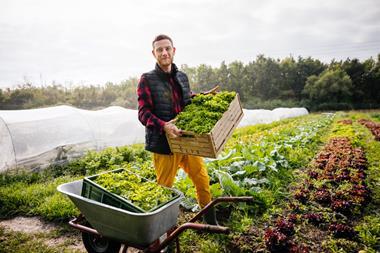
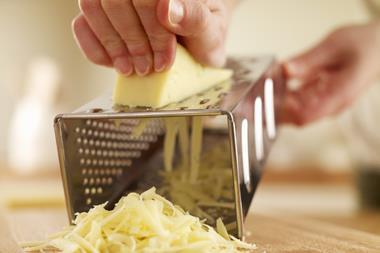

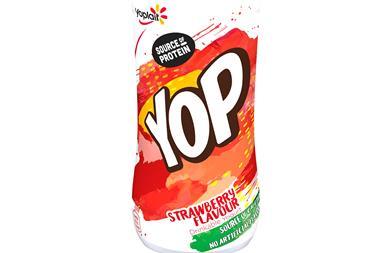
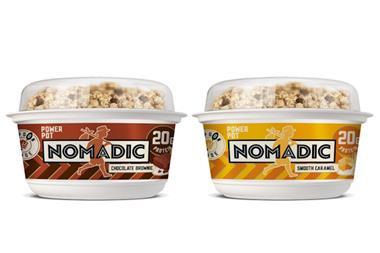

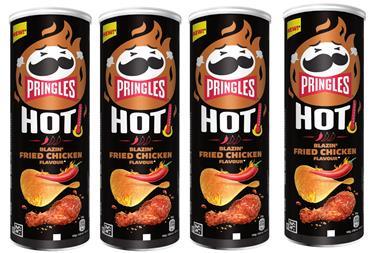



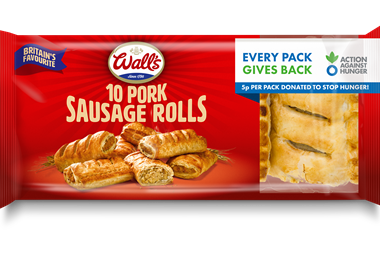
No comments yet